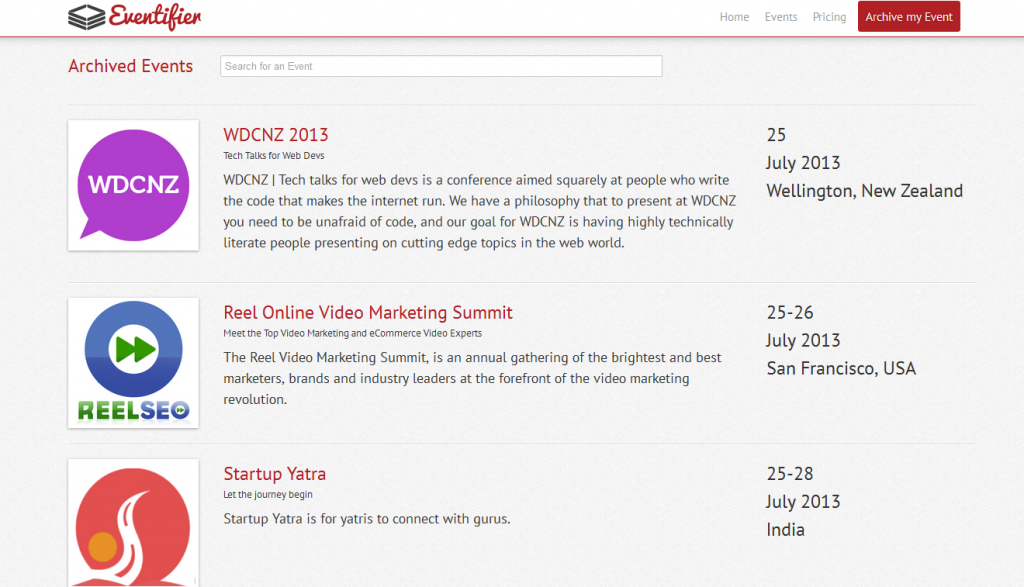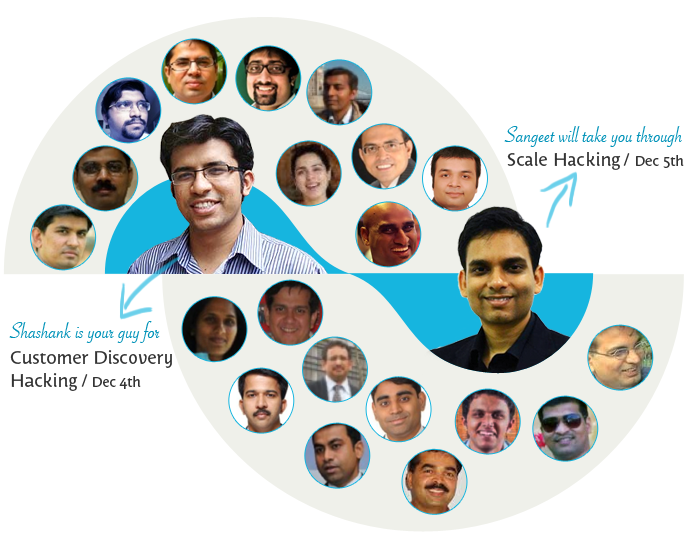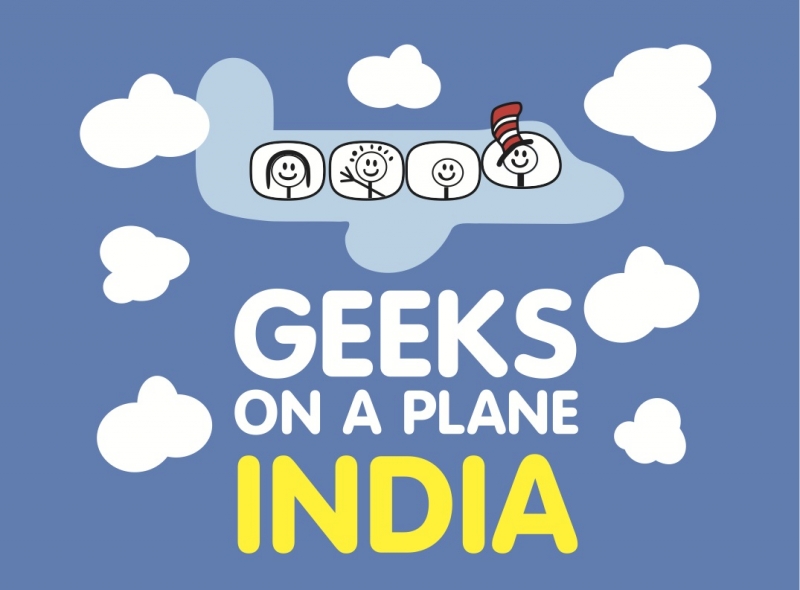A brief look at the state of the Indian startup ecosystem from the lens of design and how well it is understood or misunderstood. How the next generation of the technology startups are battling the design challenge in a globally connected ecosystem for the right consumer audience.
According to Dave McClure the founding team of a startup should include the holy trinity of a hacker, hustler and a designer. In simple terms a dream team comprising of members responsible for the technology, business/marketing and the design. Dave is no stranger to entrepreneurship or India, and as the founding partner at 500Startups (internet startup seed fund and incubator program based in Mountain View, CA) each of their accelerator programs have seen interest and presence from a number of Indian startups.
“Holy trinity of hacker, hustler and a designer”
This then begets the question of what exactly is an “Indian startup”? Unlike Israel a nation known both for its military prowess and high-technology startups along with the fact that it has the highest per-capita VC investment in the world. Startups in India like the nation itself conform to no unifying sector or theme. On one hand we have Delhi based Langhar helping connect foodies with authentic home cooked local cuisines on the other we see SarkariExam a portal dedicated to helping people find government jobs. Even after applying the filter of technology and technology enabled startups with their constantly blurring boundaries in the internet & mobile space, the bandwidth of the spectrum is still large.
If one goes by the estimates of AngelList, a platform dedicated towards the startups and the investors; there are 1500+ startups in India. This by no mean implies that all of them would be independently successful or have a profitable exit. Many of them would eventually shut shop and might not even exist the next summer. Despite this uncertainty and the increasing belief of Indian founders in their idea have led to a rising entrepreneurial activity. Catering to everybody from the hyper local audiences to products specifically built for the customers abroad. Helping us establish the fact that there is no single way to explain or define as to what constitutes an Indian startup. If question of the Indian-ness wasn’t tough enough the attention to design has increased the complexity of the understanding manifold. Invariantly a handful of startups like Cleartrip (travel), Zomato (food), Paytm (payment) and Hike (messaging) have become the poster boys for the best designed products being built in and in certain cases for India. This then progresses us to our next challenge of “What is design in the context of the startups and what is the role of the designer?”
Depending upon who do you ask, one is bound to get various forms and interpretation of what constitutes design? Making it easy to complicate things for the humble hackers and the hustlers trying to fathom as to why their designer is unable to deliver in the face of the challenge for their startup. Going over from formal the definitions provided in academic institutions of design being ‘a noun and a verb’ to the one followed by design practitioners whereby they try to highlight the difference between “art and design”. One thing that emerges is that, design has been and will always remain at its core a form of problem solving.
“Design has been and will always remain at its core a form of problem solving”
Had things been as black and white as they seem we wouldn’t have startups explaining their design strategy in terms of the visual design. Or in the case they understand the value of design keep looking for that one mythical designer who could solve all their problems. With the ever changing relationship and interaction of humans with technology; and it’s constantly evolving nature the boundaries of what explicitly is the job of a designer or the hacker is quickly overlapping.
Take the case of Rasagy Sharma who after finishing his undergraduate degree in computer science & engineering joined a Bangalore based startup as their UX Designer. One of the first ‘design’ hires in the team comprising of hackers, leading him to explain his role to the people around him. If the challenge of understanding what exactly entails in these new design roles wasn’t tricky enough, Rasagy highlights the emerging debate of ‘Should designers code?’ “The answers vary from the extremes of ‘Designers can code and should code’ to ‘Designer cannot code and is not expected to code’ with a comfortable middle ground emerging in the form of ‘Designer can code but is not expected to code’ ” says Rasagy.
“Designer can code but is not expected to code”
But if there is no one designer who can solve all of the problems of the startups which range from visual design & interaction design to in certain cases industrial design; and finding the talent is tough. Then shouldn’t we see the limited resources of the startups being spent on the function (technology) than form (design and by extension user experience)? One of the most interesting theme to emerge while talking to a number startups as a part of the research was their unanimous agreement in pushing design forward for their product. Neeraj Sabharwal who heads the design at the Hyderabad based NowFloats quotes Tom Peters when he says “The dumbest mistake is viewing design as something you do at the end of the process to ‘tidy up’ the mess, as opposed to understanding it’s a ‘day one’ issue and part of everything.” Even in the case where the technical founders thought of design as nothing more than a marketing gimmick they did approve of increasing the resources dedicated to certain design activities by either hiring talent or outsourcing the process. And putting the bill under what they felt was the ‘cost of customer acquisition’.
The cost of starting an internet business is decreasing by the year and in no other period of history have we seen more entrepreneurial activity than the present. Faced with the simple market forces of consumer choice, a positive user experiences is a simple measure of how efficiently the technology works to help the user achieve his goals. In a somewhat surprising trend that in hindsight makes perfect sense, some of the best designed startups being built in the country include a designer as a part of the founding or the founders atleast have the design aesthetics in place to drive things forward.

Eventifier is being built in the southern city of Chennai at The Startup Center. Eventifier helps keep all the social media chatter around an event including the conversation, photos, videos, presentation decks in a single place. They are one of the few startups using the hacker, hustler and the designer approach since the day they began. Mohammed Saud holds the mantle of the Chief Design Officer and one would give weight to his belief when he says “Being equally proficient in all facets of design even when their underlying principle might be the same is difficult.” His solution is the one that is increasingly becoming common, become proficient in one form of design yet understands the other well enough to guide somebody with your vision. A similar ideology was put forth by Arun Jay, who amongst a number of other claims holds the post of the principle designer at SlideShare and the senior UX designer at LinkedIn. By academic training Arun began as a communication designer but his experience with film making, photography and web based technologies makes him the ideal choice for the unicorn designers so many startups look for.

But it wouldn’t be fun if there weren’t a few startups breaking the mould. HealthifyMe and NowFloats are two startups which were a part of the Microsoft Accelerator program in Bangalore. On one hand we have Neeraj Sabharwal from NowFloats with no formal training in the various disciplines of design yet relying on his industry experience and understanding of design thinking principles to lead the charge. On the other we have Tushar Vashisht co-founder of HealthifyMe attributing the fact that “Lack of a dedicated designer in the founding team even with the team valuing design, cost them precious resources in the decision making and product building exercise. With HealthifyMe treating the user experience as an integral part of the product building process getting Rohan Gupta as a designer onboard has positively affected our shipping time.”
But believing that a well-designed product is the end all in the product building exercise would be plain naïve. Design is one of the integral processes amongst the host of other responsibilities held by the hustlers and the hackers which make a product successful. Brij Vaghani is the founder of live traffic monitoring service, Traffline which currently operates in three metropolitan cities. His team is working in close association with a design studio for the soon to be launching next version of their product. “Even though we understood the value of design, the founding team relied upon our core strengths of technology in the early stages of the product. An approach which we feel might have had an impact on the metrics we use to track the product success but something that was within permissible levels”
Where are we headed? Great design and technology have always existed. The founders are still looking for that elusive designer who can handle all their design problems, but as unicorns go those beings are still rare to find. The consumer internet is nearly twenty years old, the smartphone nearly six and the tablet less than four. Yet the potential of the startups building upon and specifically for these platforms is seeing an exponential growth. We haven’t even begun scratching the surface of the potential and can’t predict the trajectory of the startup economy in India serving an internal audience of a billion plus people and catering to those abroad. But the fact remains that the designers seem to have finally found a voice and Indian startups are rearing for them to go.
Author’s Note: This article was written for a collaborative publication: Create Change for Kyoorius Designyatra 2013 produced by Kyoorius and British Council, India and is a part of British Council’s design writing programme.
The post has been slightly modified for the web by adding of the appropriate hyperlinks to the startups and the resources mentioned to aide the reader. You can download the PDF version of the print magazine in all its glory here. The article is on page sixty-nine.
 We have the next set of attendees signed up for each of the tracks. We are also happy to announce two new coaches—Shashank, co-founder and CEO at Practo and Sangeet Paul, mentor 500 startups and contributor for HBR. As it happens with marathon runners, everyone has a different target, so based on your timing targets, preferred trails and routes; this will be a great opportunity to also help you choose your future training partners beyond the bootcamp.
We have the next set of attendees signed up for each of the tracks. We are also happy to announce two new coaches—Shashank, co-founder and CEO at Practo and Sangeet Paul, mentor 500 startups and contributor for HBR. As it happens with marathon runners, everyone has a different target, so based on your timing targets, preferred trails and routes; this will be a great opportunity to also help you choose your future training partners beyond the bootcamp.







